Another entry in my controller series, is a control setup that simply cannot be ignored any longer: the touch interface. For most of us, this comes in the form of our smartphones. Of course, I could not hope to cover all touch interfaces with a single post. This post mostly focuses on those touch interfaces that are implemented well, so think iPlatform and high-grade Android phones.
I must say, I absolutely love the touch interface. I can see a future where all of our devices are actually a touch-interface. Keyboard keys? A thing of the past. Numerical buttons on the telephone? A thing of the past. A touch interface can easily do these things. Best of all, it is not bound to a single purpose. Because it is essentially a monitor, it can be manipulated to display different screens and behave in different ways.
I was a little wary when switching to a smartphone. Many of my friends already had one. I thought they were cool, but I simply could not see myself doing much on such a small screen with what seemed like not the greatest functionality. The reality is though that these touch interfaces with their wide ranges of functionality work incredibly well. Being the type of person that regularly ignores the phone when it is ringing, I had a hard time thinking I needed a fancy phone to do anything. I could not have been further from correct. I may only talk on my phone for less than 100 minutes per month, but the amount of other things I do with it account for hours out of each day.
In the case of playing games, a touch interface only works well if it has multi-touch capability. This means that the phone can easily register both of your thumbs on the screen at the same time. When this functionality is done correctly, the screen can instantly be transformed into a controller or anything else you need for games. There is a little bit of processing power that needs to be added in order to make the response seem up to par, but even when emulating older games, the touch interface on many of these devices is more than adequate.
A major concern I had with the touch interface is fingerprints. Oh how I hate fingerprints on my screens. Many of these device manufacturers knew this though and designed their screens to be able to easily wipe away the prints. Further, high definition beats out fingerprints any day. Anybody concerned about fingerprints messing up their view on a touch device does not yet have proper experience with a touch screen.
I really feel that the touch interface is the wave of the future. No Microsoft, dancing in front of a camera to interact with your television will never become mainstream. However, we can certainly make multi-purpose devices with touch screens that do whatever we need. While I would not recommend using a cheap device, if you have apprehensions about touch devices, this is the day and age to get one and get comfortable.
Showing posts with label controller. Show all posts
Showing posts with label controller. Show all posts
Wednesday, January 26, 2011
More Controllers: The Touch Interface
Labels:
Android,
controller,
iOS,
iPad,
iPhone,
iPlatform,
rant,
rave,
review,
touch interface
Thursday, January 20, 2011
More Controllers: The Logitech Dual Action Game Pad
The Logitech Dual Action is a game pad for the PC that has been around for quite some time. While I am not much of a PC gamer, when I first had a need for a PC game pad, I picked the Logitech Dual Action due to its attractive price and design. The Dual Action was clearly a great choice, because I have never felt a need to pick a different controller for PC gaming since first using this.
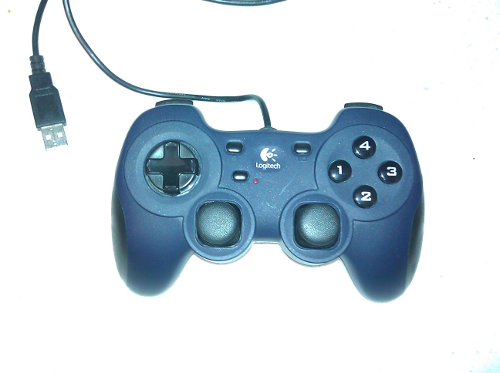
At first glance, you can see exactly what attracted my eye. The Logitech Dual Action shamelessly copies the design of the Sony PlayStation controller. Holding the controller gives much the same feel as a PlayStation 2 controller. The spatial dimensions are just barely different than the PS2 controller; almost negligible to the hands. The buttons are another area that nearly copied the PS2 controller. They are nice and smooth and placed in the same locations. The only noticeable difference between this controller and the PS2 controller is the fact that the buttons are labeled with numbers, the color, and the fact that it plugs into the computer via a USB plug.
This controller does not just please the eye either. It will perform well in all of your games. Logitech is the household name when it comes to PC peripherals. This controller delivers nothing less than what you would expect from such a name. I have used it for shooting games, emulators, Flash games, and even incorporated it into my own programming projects. As far as usability goes, I will give this controller the same grade as the Dual Shock 3, "meets expectations". Again, it cannot get any better than "meets expectations", because we really need to expect perfection from our video game controllers.
I have heard that the drivers you use make a difference with this controller. Look, it is now 2011. Most of our devices that are plug-n-play will automatically install the drivers needed over the internet. I always recommend trying this feature before trying the drivers on the provided disc. Often times, there may be hardware or operating system specific drivers that are not included on the disc. These will be detected by the drivers downloaded over the internet. However, there are always cases where the over the internet drivers do not work; therefore, if you ever run into such an issue, clean the drivers off the computer and use the manufacturer supplied disc. In the case of this controller though, do not use the disc of drivers that come with it if you have an internet connection. The over the internet drivers will work fine, if not better than the drivers on the disc.
I have said something similar to this before, but do not be innovative with my game controllers unless it makes sense. The Logitech Dual Action Game Pad took a page out of a familiar book, copied it well, and distributed it for a platform that needed a decent video game controller. You will not find a better game pad for the PC. Even better, this beauty is only $20. Go get yours now!

At first glance, you can see exactly what attracted my eye. The Logitech Dual Action shamelessly copies the design of the Sony PlayStation controller. Holding the controller gives much the same feel as a PlayStation 2 controller. The spatial dimensions are just barely different than the PS2 controller; almost negligible to the hands. The buttons are another area that nearly copied the PS2 controller. They are nice and smooth and placed in the same locations. The only noticeable difference between this controller and the PS2 controller is the fact that the buttons are labeled with numbers, the color, and the fact that it plugs into the computer via a USB plug.
This controller does not just please the eye either. It will perform well in all of your games. Logitech is the household name when it comes to PC peripherals. This controller delivers nothing less than what you would expect from such a name. I have used it for shooting games, emulators, Flash games, and even incorporated it into my own programming projects. As far as usability goes, I will give this controller the same grade as the Dual Shock 3, "meets expectations". Again, it cannot get any better than "meets expectations", because we really need to expect perfection from our video game controllers.
I have heard that the drivers you use make a difference with this controller. Look, it is now 2011. Most of our devices that are plug-n-play will automatically install the drivers needed over the internet. I always recommend trying this feature before trying the drivers on the provided disc. Often times, there may be hardware or operating system specific drivers that are not included on the disc. These will be detected by the drivers downloaded over the internet. However, there are always cases where the over the internet drivers do not work; therefore, if you ever run into such an issue, clean the drivers off the computer and use the manufacturer supplied disc. In the case of this controller though, do not use the disc of drivers that come with it if you have an internet connection. The over the internet drivers will work fine, if not better than the drivers on the disc.
I have said something similar to this before, but do not be innovative with my game controllers unless it makes sense. The Logitech Dual Action Game Pad took a page out of a familiar book, copied it well, and distributed it for a platform that needed a decent video game controller. You will not find a better game pad for the PC. Even better, this beauty is only $20. Go get yours now!
Labels:
computer,
controller,
PC,
rant,
rave,
review,
video game
Tuesday, January 18, 2011
More Controllers: The Wiimote
The Nintendo Wii is probably the most uniquely innovative console in this generation. Really though, the focus is not so much the console itself. The innovation stems from the way in which the console is controlled: the Wiimote. The Wiimote has proven to be the mainstream introduction of motion control to the video gaming world. The Nintendo Wii been so successful with motion control that we have seen the other major console manufacturers flat-out abandon other planned console features and run straight for the motion control jackpot. Continuing my controller series, a synopsis of how I feel about the Wiimote.
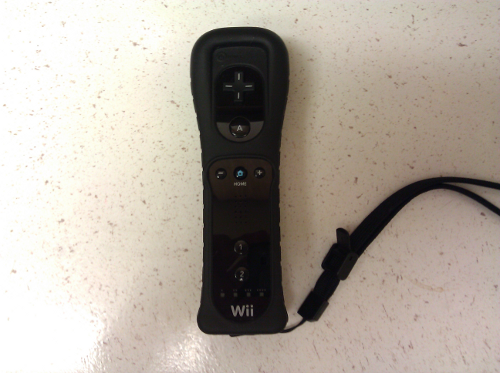
The thought that has always stuck with me pertaining to the Wiimote is that it is not conducive to playing video games in the way that we play them. The Wii really does not feel like it belongs in this generation of video game console at all. This serves as a testament to the power of motion control in gaming. In this instance, being the first to make it work was the major contributing factor to the success of the product.
The fundamental problem I have with the Wiimote is that the motion control falls apart when the gaming gets fast. It feels sluggish in response. No matter how much I play, I cannot get over the fact that I am actually waving the Wiimote at a sensor bar either below or above my television, not at the television itself. I really do not think it tracks that well either, no matter the sensitivity setting on the controller. In many ways, this is why I would think the six-axis control on the PS3 Dual Shock 3 would win over the Wiimote any day. Yet, developers do not go out of their way to support the six-axis, because it feels awkward when gaming gets fast. You have to hold the controller in a certain way and move just right in order to do what you want. In a lot of ways, it turns video games into a process of mimicking a bunch of hand signals. This goes the same for Microsoft's solution. I do not buy into, "Your body is the controller." That directly translates into, "Charades for your television." Bottom line, a gaming controller will have a place in gaming for at least the next couple generations of consoles. We have at least a few technological feats in processing to go before natural feeling motion control is fully viable.
The Wiimote falls apart further though when you begin using it as a traditional controller. Whether you want to or not, many games require you to spend some time using the Wiimote as a traditional controller. There are several configurations for this. Some games have you hold the Wiimote sideways. Another method has you connect what is known as the nunchuck and control with the nunchuk in the left hand and the Wiimote in the right. Other methods include various other "classic" controllers Nintendo has released for use with certain games. The better games will allow you to choose the control method; however, most will make you use either the sideway method or the nunchuck method.
Holding the Wiimote sideways looks and feels much like holding a Nintendo controller. In terms of gameplay, the shortage of buttons highlights the feel. While it is by far my favorite non-motion control method, it feels every bit as old-fashioned as it should. Many games done in 3D almost have an auto-movement feel. Essentially, the game plays like a 2D Game, with the character moving from left-to-right in a tightly confined space. Nintendo could have planned for the thought that a developer would want to use the controller in such a way and at least included an analog stick.
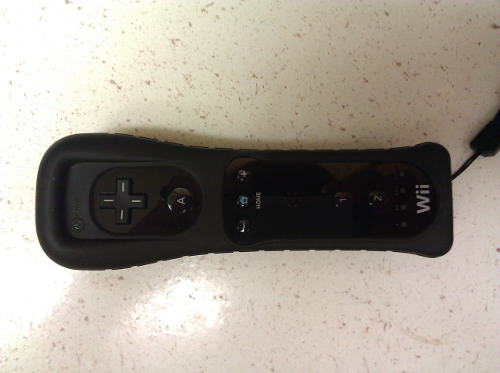
The nunchuck setup is my least favorite, but it is the best configuration for 3D games with wide-open areas. The nunchuck is an analog stick with shoulder buttons; therefore, it does feel natural in your left hand. The fact that is only connected to the Wiimote with a cord is a bit awkward at first though. After a while, you do get used to it; however, it still feels strangely old. Like the motion control configuration, I do not believe it holds up to the faster moving games.
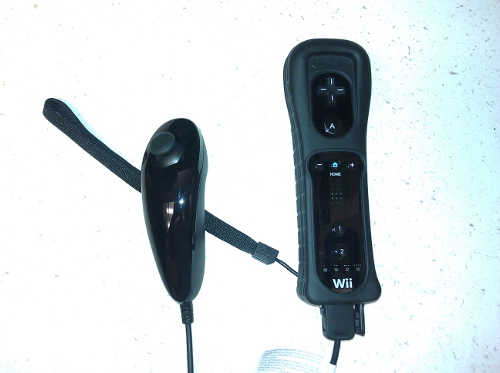
There are many add-ons for the Wiimotes. Mostly, these come in the form of plastic molds that you can stick the Wiimote in while playing. This includes various guns, sports peripherals, and driving peripherals. Just about all of these are widely unnecessary. There is on add-on the deserves special mention though. The Plus extension is a worthless addition forced upon the consumer for Nintendo to make more money on what would otherwise be a relatively cheap controller. It was bad enough when the Plus extension was thrown in as an add-on. Now, it is built into the Wiimote. This makes the sideways configuration less comfortable, because you must stretch your thumb further to use those buttons. I am not okay with this. There are only a small handful of games that use the Plus extension and most of those are not fun. Spare me the worthless attachments please.
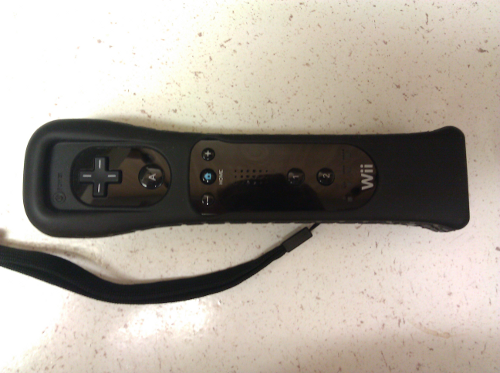
There is no denying that Nintendo has paved the way for motion technology to have a place in gaming. However, in doing so, I believe they have really shown the true limitations of such technology as well. While other companies are currently emulating the motion control experience, the fact that most games still require you to use a controller in a traditional controller way proves that the video game controller as we know it is here to stay.

The thought that has always stuck with me pertaining to the Wiimote is that it is not conducive to playing video games in the way that we play them. The Wii really does not feel like it belongs in this generation of video game console at all. This serves as a testament to the power of motion control in gaming. In this instance, being the first to make it work was the major contributing factor to the success of the product.
The fundamental problem I have with the Wiimote is that the motion control falls apart when the gaming gets fast. It feels sluggish in response. No matter how much I play, I cannot get over the fact that I am actually waving the Wiimote at a sensor bar either below or above my television, not at the television itself. I really do not think it tracks that well either, no matter the sensitivity setting on the controller. In many ways, this is why I would think the six-axis control on the PS3 Dual Shock 3 would win over the Wiimote any day. Yet, developers do not go out of their way to support the six-axis, because it feels awkward when gaming gets fast. You have to hold the controller in a certain way and move just right in order to do what you want. In a lot of ways, it turns video games into a process of mimicking a bunch of hand signals. This goes the same for Microsoft's solution. I do not buy into, "Your body is the controller." That directly translates into, "Charades for your television." Bottom line, a gaming controller will have a place in gaming for at least the next couple generations of consoles. We have at least a few technological feats in processing to go before natural feeling motion control is fully viable.
The Wiimote falls apart further though when you begin using it as a traditional controller. Whether you want to or not, many games require you to spend some time using the Wiimote as a traditional controller. There are several configurations for this. Some games have you hold the Wiimote sideways. Another method has you connect what is known as the nunchuck and control with the nunchuk in the left hand and the Wiimote in the right. Other methods include various other "classic" controllers Nintendo has released for use with certain games. The better games will allow you to choose the control method; however, most will make you use either the sideway method or the nunchuck method.
Holding the Wiimote sideways looks and feels much like holding a Nintendo controller. In terms of gameplay, the shortage of buttons highlights the feel. While it is by far my favorite non-motion control method, it feels every bit as old-fashioned as it should. Many games done in 3D almost have an auto-movement feel. Essentially, the game plays like a 2D Game, with the character moving from left-to-right in a tightly confined space. Nintendo could have planned for the thought that a developer would want to use the controller in such a way and at least included an analog stick.

The nunchuck setup is my least favorite, but it is the best configuration for 3D games with wide-open areas. The nunchuck is an analog stick with shoulder buttons; therefore, it does feel natural in your left hand. The fact that is only connected to the Wiimote with a cord is a bit awkward at first though. After a while, you do get used to it; however, it still feels strangely old. Like the motion control configuration, I do not believe it holds up to the faster moving games.

There are many add-ons for the Wiimotes. Mostly, these come in the form of plastic molds that you can stick the Wiimote in while playing. This includes various guns, sports peripherals, and driving peripherals. Just about all of these are widely unnecessary. There is on add-on the deserves special mention though. The Plus extension is a worthless addition forced upon the consumer for Nintendo to make more money on what would otherwise be a relatively cheap controller. It was bad enough when the Plus extension was thrown in as an add-on. Now, it is built into the Wiimote. This makes the sideways configuration less comfortable, because you must stretch your thumb further to use those buttons. I am not okay with this. There are only a small handful of games that use the Plus extension and most of those are not fun. Spare me the worthless attachments please.

There is no denying that Nintendo has paved the way for motion technology to have a place in gaming. However, in doing so, I believe they have really shown the true limitations of such technology as well. While other companies are currently emulating the motion control experience, the fact that most games still require you to use a controller in a traditional controller way proves that the video game controller as we know it is here to stay.
Labels:
controller,
game,
Nintendo,
rant,
rave,
review,
video game,
Wii,
Wiimote
Saturday, January 15, 2011
The Controller Standard: The Sony Dual Shock 3
The other day, I wrote about how I would never bother with an XBox 360, mostly due to the awful controller it uses. Naturally, I decided to do a bit of a series on video game controllers. Since I have already described what I believe to be the worst of the worst controllers, I will continue with what I believe to be the best of the best controllers: the Sony Dual Shock 3 for the PlayStation 3.
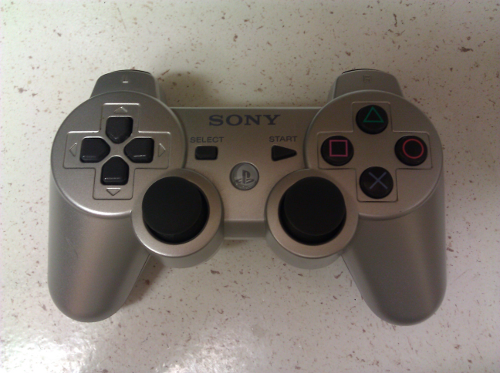
The one thing that just makes the PS3 Dual Shock 3 shine is the design. Just take a good look at the controller. Not only is it beautiful, but it is the natural evolution of the video game controller. Have a look at the Dual Shock 3 and the Super Nintendo controller at the same time. You can clearly see some gold-star breeding happened to arrive at the Dual Shock 3 from the SNES controller.
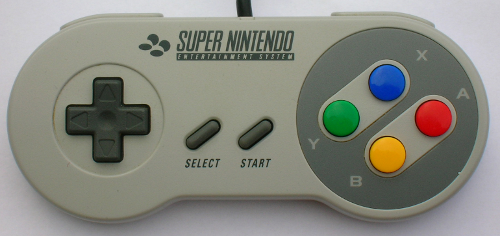
It is natural evolution. It is the way it was meant to be. Nice, sleek design. All buttons comfortably within reach in terms of hand positioning on the controller as well as the position of buttons in relation to other buttons. A look at this controller in the hands shows that everything from the curvature to the position of which the thumbs and fingers rest on the controller just screams ready to play some video games. There is no looking at this controller and asking yourself, "Why?" The Dual Shock 3 needs no explanation.
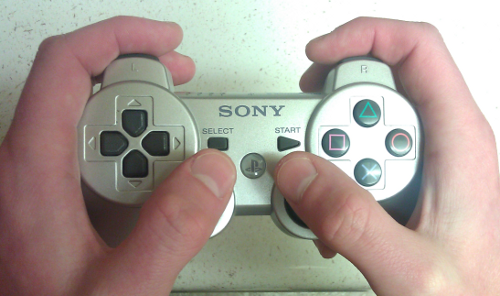
As far as response goes, I can only really give a "meets expectations" score. This is because I expect my game controllers to be perfect. I like how the controller responds in much game. Of course, this has much to do with the software programming as well. However, it takes a great set of drivers to make it do what it does. My only wish in this department would be the ability to change the sensitivity on the controller side as opposed to adjusting it on the game software side. This would allow the controller to have the same sensitivity across all games. This is also true of the pressure sensitivity. All of the buttons on the Dual Shock 3 are pressure sensitive. It would be great to have a way to adjust the sensitivity on the hardware side.
The rechargeable batteries in the controller are certainly worth a mention as well. The Dual Shock 3 is the only current-generation controller that comes with rechargeable batteries. To make it better, they are built in. You do not have to mess with them at all. Now, I have heard complaints about the life of these batteries. Because they are built into the controller, if the batteries go bad, the controller is gone. Look, you will not have this issue if you properly care for you controller. There is a correct way and an incorrect way to recharge your batteries. The correct way is as follows: first, always charge the batteries 100% before the first use; second, only charge after the first use if the batteries are dead or near dead, like lights flashing dead; third, do not take the controller/batteries off the charger until the batteries are completely charged. If you follow these three steps, your rechargeable batteries will live for the life of the console.
A nice new feature of the Dual Shock 3 is one of the most underused features: six-axis control. This controller is capable of motion control that is at least as accurate as what you would find on the Wii. It is unfortunate that many developers overlook the six-axis control. In many games, it works very well. There are many missed opportunities that come when talking about six-axis. From driving to taking cover, I can think of at least a dozen uses that nobody bothers with. In this age, especially since Sony has moved on to a peripheral that is all about motion control, yet requires a camera, there is not reason for the six-axis to be as neglected as it has been.
My favorite feature of the Dual Shock 3 almost never came to be: the dual shock itself. I love the fact that my controller vibrates while playing games as a way to show feedback. A controller without dual shock can still be a good controller, but the dual shock has become the signature of a PlayStation controller. I was very disappointed that the dual shock was not in the original PS3 controller. When it was announced, I felt as if I had been reunited with a long-lost son.
I could actually stand the weight of the Dual Shock 3 to be a little heavier. I like my controllers to feel as if they really would break the television if I through it in a rage fit. Definitely, after the first generation of PlayStation 3 controller, the weight increased a little, but I wish they would add at least a few more ounces to the overall weight. It might feel a little too light if the one before it were not lighter, but the Dual Shock 3 will not be forgotten about in your hands.
Ultimately, what makes a good controller is all around good design. Manufacturers should not be so concerned about a unique look to be straying from comfort or functionality. From the looks to the precision to the features, the Dual Shock 3 is the gold-standard in which all other controller manufacturers should seek to achieve.

The one thing that just makes the PS3 Dual Shock 3 shine is the design. Just take a good look at the controller. Not only is it beautiful, but it is the natural evolution of the video game controller. Have a look at the Dual Shock 3 and the Super Nintendo controller at the same time. You can clearly see some gold-star breeding happened to arrive at the Dual Shock 3 from the SNES controller.

It is natural evolution. It is the way it was meant to be. Nice, sleek design. All buttons comfortably within reach in terms of hand positioning on the controller as well as the position of buttons in relation to other buttons. A look at this controller in the hands shows that everything from the curvature to the position of which the thumbs and fingers rest on the controller just screams ready to play some video games. There is no looking at this controller and asking yourself, "Why?" The Dual Shock 3 needs no explanation.

As far as response goes, I can only really give a "meets expectations" score. This is because I expect my game controllers to be perfect. I like how the controller responds in much game. Of course, this has much to do with the software programming as well. However, it takes a great set of drivers to make it do what it does. My only wish in this department would be the ability to change the sensitivity on the controller side as opposed to adjusting it on the game software side. This would allow the controller to have the same sensitivity across all games. This is also true of the pressure sensitivity. All of the buttons on the Dual Shock 3 are pressure sensitive. It would be great to have a way to adjust the sensitivity on the hardware side.
The rechargeable batteries in the controller are certainly worth a mention as well. The Dual Shock 3 is the only current-generation controller that comes with rechargeable batteries. To make it better, they are built in. You do not have to mess with them at all. Now, I have heard complaints about the life of these batteries. Because they are built into the controller, if the batteries go bad, the controller is gone. Look, you will not have this issue if you properly care for you controller. There is a correct way and an incorrect way to recharge your batteries. The correct way is as follows: first, always charge the batteries 100% before the first use; second, only charge after the first use if the batteries are dead or near dead, like lights flashing dead; third, do not take the controller/batteries off the charger until the batteries are completely charged. If you follow these three steps, your rechargeable batteries will live for the life of the console.
A nice new feature of the Dual Shock 3 is one of the most underused features: six-axis control. This controller is capable of motion control that is at least as accurate as what you would find on the Wii. It is unfortunate that many developers overlook the six-axis control. In many games, it works very well. There are many missed opportunities that come when talking about six-axis. From driving to taking cover, I can think of at least a dozen uses that nobody bothers with. In this age, especially since Sony has moved on to a peripheral that is all about motion control, yet requires a camera, there is not reason for the six-axis to be as neglected as it has been.
My favorite feature of the Dual Shock 3 almost never came to be: the dual shock itself. I love the fact that my controller vibrates while playing games as a way to show feedback. A controller without dual shock can still be a good controller, but the dual shock has become the signature of a PlayStation controller. I was very disappointed that the dual shock was not in the original PS3 controller. When it was announced, I felt as if I had been reunited with a long-lost son.
I could actually stand the weight of the Dual Shock 3 to be a little heavier. I like my controllers to feel as if they really would break the television if I through it in a rage fit. Definitely, after the first generation of PlayStation 3 controller, the weight increased a little, but I wish they would add at least a few more ounces to the overall weight. It might feel a little too light if the one before it were not lighter, but the Dual Shock 3 will not be forgotten about in your hands.
Ultimately, what makes a good controller is all around good design. Manufacturers should not be so concerned about a unique look to be straying from comfort or functionality. From the looks to the precision to the features, the Dual Shock 3 is the gold-standard in which all other controller manufacturers should seek to achieve.
Labels:
controller,
Dual Shock,
game,
PlayStation,
PS3,
rant,
rave,
review,
video game
Wednesday, January 12, 2011
Why the XBox 360 Will Never Have a Spot in My Home
There is no denying that I am a PlayStation fanboy. I love my PlayStation and my PlayStation loves me. However, being a video gamer, I would be lying if I were to say there was not room for another console in my house. That is why I also have a Wii. There is also this other console out right now that every once in a while, my thoughts cannot avoid. I like it to refer to it as Microsoft's admission to Windows being an inferior platform for gaming even though it could deliver so much more than some of these consoles. Most of you know it as the XBox 360.
For many people, the XBox 360 was a clear and obvious choice. It releases before the PlayStation 3. It was cheaper than the PlayStation 3. By the time the PlayStation 3 released, the XBox 360 had a larger library of games.
There were also less obvious reasons for the XBox 360 when this generation of consoles were just getting their feet wet. It did not support a high-definition format right out of the box. There was an HD-DVD add-on; however, many felt as if Sony took a real dive by making the Blu-Ray disc the choice format for their console. Many uninformed people used scare tactic to attempt to keep people from buying Blu-Ray. One common myth was that Blu-Ray players would not play DVDs. Who would want to update their movie collection and render their current collection useless? Of course, this was a myth from the start. The first popular Blu-Ray player, the PlayStation 3, played DVDs from the start. These days, I do believe it is impossible to find a Blu-Ray player that will not play DVDs.
Anyway, so it is fair to say that the XBox 360 had more steam than the PlayStation 3 from the beginning. However, when it came time for me (or my wife, as it was) to put down a ridiculous amount of money for a current-generation console, there was no question it had to be the PlayStation 3.
It was not for a lack of players that I chose a PlayStation 3. I still would have to say that more people I know own an XBox 360 than a PlayStation 3. I knew this generation of console would have heavy online integration. Of course I would like to be able to game with my friends over the internet. Unfortunately, the friends were not enough to convince me to go with an XBox 360. The subscription fees did not help to persuade me either.
It was not due to missing titles in the XBox 360 library. In the beginning, the XBox 360 had several exclusives. As time wore on, companies such as Capcom opened up their libraries to the XBox. Hey, XBox even scored some early release dates and exclusive downloadable content for several games. However, I always knew that anything that was a third-party exclusive to the XBox would eventually make its way over to the PlayStation. Indeed, there are only a few instances in which this did not happen. The first-party titles are almost all available for PC. I have never gone to play these anyway.
It was not the lack of backwards compatibility. I never owned an XBox game, so I was certainly not turned away by that. As a matter of fact, the way Microsoft handled backwards compatibility was much better than the way Sony did it in my book. I would much rather be told flat-out that I could not expect backwards compatibility rather than get it then have it taken away. My PlayStation does play PSX and PS2 games though, so it is a plus for PlayStation in my book. However, everybody that does not have a 60 gigabyte PS3 was lied to by Sony, which does not sit right with me.
What was it then (beyond my PlayStation fanboydom)?
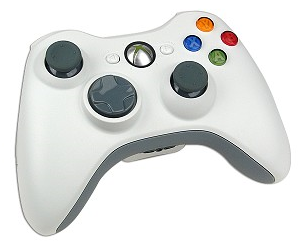
That is correct. Most of why I do not like the XBox 360 and did not like the XBox before it is this awful excuse for a controller. One thing is crystal clear when examining this monstrosity of a controller. Microsoft wanted a controller that looked familiar, but was different enough to stand out in a crowd. Unfortunately, some of the measures they took were simply too rash to allow for a comfortable playing experience.
The rearrangement of buttons is my biggest complaint about the controller. I believe the directional pad belongs on the far left side of the controller. The analog sticks should be where the thumb would naturally rest when handling the controller with two hands. Putting these two sticks on different longitudes makes the whole experience feel very unnatural. I am trying to play a game, not do tongue-twisters with my thumbs. I really just wish Microsoft would have put the directional pad and analog stick where they belong. Next thing you know, they will put the shoulder buttons all the way to the back and the directional buttons up on the shoulders. No Microsoft, you may not steal idea. If you do, it is a horrible design as well.
What could make this arrangement fallacy even worse? The spatial dimensions of the controller. Why is it that I feel as if I am turning my hand on the control and stretching my thumb over there to reach that directional pad and right analog stick? Again, I am playing video games. I am not attempting to train my thumbs for the Olympics.
Only adding to my frustrations with the controller is the feel of the buttons; particularly that hard-to-reach directional pad. The directional pad is setup as a single piece that controls the four directions. It is raise above the rest of the controller for some unknown reason. It is also stiff and has somewhat-sharp edges. To further complicate the feeling, the analog sticks and directional pad curve downward in the centers. All of this spells two things: sloppy control and blisters on your thumb.
I often forget about this controller dilemma. This is due to the fact that I usually will not play the XBox, even if I am in the room and people are playing. However, this last weekend I got the opportunity to play an old friend at Super Street Fighter IV. It was on. I picked up that controller and was immediately disgusted with the button layout. Analog sticks do not make good substitutes for arcade sticks. Therefore, when I play fighting games, my thumb goes straight for the directional pad. However, playing this way on the XBox 360 is a downright disadvantage. To the point that I was desperately trying to get the analog stick doing something good for me. Try as I might, I was constantly stretching my thumb back over to that uncomfortable excuse for a directional pad.
Luckily, the matches only lasted for about twenty minutes. Good thing too, because I was certainly over it. Anyway, I had to leave, so I did. Drove home, went to brush my teeth, noticed a little something extra on my thumb when grabbing my toothbrush. Oh great, a blister on my thumb from literally no more than twenty minutes of playing. This is horrible.
Therefore, Microsoft, I would like to say to you one thing. If you are making anything besides an operating system for computers, please stop. I like my companies to stay focused and you are stretching outside of your and my comfort zones. Concentrate on what you do well; making Windows better. If you do not do this, all I can do is stick my sore thumb at you!
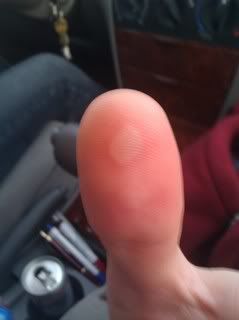
For many people, the XBox 360 was a clear and obvious choice. It releases before the PlayStation 3. It was cheaper than the PlayStation 3. By the time the PlayStation 3 released, the XBox 360 had a larger library of games.
There were also less obvious reasons for the XBox 360 when this generation of consoles were just getting their feet wet. It did not support a high-definition format right out of the box. There was an HD-DVD add-on; however, many felt as if Sony took a real dive by making the Blu-Ray disc the choice format for their console. Many uninformed people used scare tactic to attempt to keep people from buying Blu-Ray. One common myth was that Blu-Ray players would not play DVDs. Who would want to update their movie collection and render their current collection useless? Of course, this was a myth from the start. The first popular Blu-Ray player, the PlayStation 3, played DVDs from the start. These days, I do believe it is impossible to find a Blu-Ray player that will not play DVDs.
Anyway, so it is fair to say that the XBox 360 had more steam than the PlayStation 3 from the beginning. However, when it came time for me (or my wife, as it was) to put down a ridiculous amount of money for a current-generation console, there was no question it had to be the PlayStation 3.
It was not for a lack of players that I chose a PlayStation 3. I still would have to say that more people I know own an XBox 360 than a PlayStation 3. I knew this generation of console would have heavy online integration. Of course I would like to be able to game with my friends over the internet. Unfortunately, the friends were not enough to convince me to go with an XBox 360. The subscription fees did not help to persuade me either.
It was not due to missing titles in the XBox 360 library. In the beginning, the XBox 360 had several exclusives. As time wore on, companies such as Capcom opened up their libraries to the XBox. Hey, XBox even scored some early release dates and exclusive downloadable content for several games. However, I always knew that anything that was a third-party exclusive to the XBox would eventually make its way over to the PlayStation. Indeed, there are only a few instances in which this did not happen. The first-party titles are almost all available for PC. I have never gone to play these anyway.
It was not the lack of backwards compatibility. I never owned an XBox game, so I was certainly not turned away by that. As a matter of fact, the way Microsoft handled backwards compatibility was much better than the way Sony did it in my book. I would much rather be told flat-out that I could not expect backwards compatibility rather than get it then have it taken away. My PlayStation does play PSX and PS2 games though, so it is a plus for PlayStation in my book. However, everybody that does not have a 60 gigabyte PS3 was lied to by Sony, which does not sit right with me.
What was it then (beyond my PlayStation fanboydom)?

That is correct. Most of why I do not like the XBox 360 and did not like the XBox before it is this awful excuse for a controller. One thing is crystal clear when examining this monstrosity of a controller. Microsoft wanted a controller that looked familiar, but was different enough to stand out in a crowd. Unfortunately, some of the measures they took were simply too rash to allow for a comfortable playing experience.
The rearrangement of buttons is my biggest complaint about the controller. I believe the directional pad belongs on the far left side of the controller. The analog sticks should be where the thumb would naturally rest when handling the controller with two hands. Putting these two sticks on different longitudes makes the whole experience feel very unnatural. I am trying to play a game, not do tongue-twisters with my thumbs. I really just wish Microsoft would have put the directional pad and analog stick where they belong. Next thing you know, they will put the shoulder buttons all the way to the back and the directional buttons up on the shoulders. No Microsoft, you may not steal idea. If you do, it is a horrible design as well.
What could make this arrangement fallacy even worse? The spatial dimensions of the controller. Why is it that I feel as if I am turning my hand on the control and stretching my thumb over there to reach that directional pad and right analog stick? Again, I am playing video games. I am not attempting to train my thumbs for the Olympics.
Only adding to my frustrations with the controller is the feel of the buttons; particularly that hard-to-reach directional pad. The directional pad is setup as a single piece that controls the four directions. It is raise above the rest of the controller for some unknown reason. It is also stiff and has somewhat-sharp edges. To further complicate the feeling, the analog sticks and directional pad curve downward in the centers. All of this spells two things: sloppy control and blisters on your thumb.
I often forget about this controller dilemma. This is due to the fact that I usually will not play the XBox, even if I am in the room and people are playing. However, this last weekend I got the opportunity to play an old friend at Super Street Fighter IV. It was on. I picked up that controller and was immediately disgusted with the button layout. Analog sticks do not make good substitutes for arcade sticks. Therefore, when I play fighting games, my thumb goes straight for the directional pad. However, playing this way on the XBox 360 is a downright disadvantage. To the point that I was desperately trying to get the analog stick doing something good for me. Try as I might, I was constantly stretching my thumb back over to that uncomfortable excuse for a directional pad.
Luckily, the matches only lasted for about twenty minutes. Good thing too, because I was certainly over it. Anyway, I had to leave, so I did. Drove home, went to brush my teeth, noticed a little something extra on my thumb when grabbing my toothbrush. Oh great, a blister on my thumb from literally no more than twenty minutes of playing. This is horrible.
Therefore, Microsoft, I would like to say to you one thing. If you are making anything besides an operating system for computers, please stop. I like my companies to stay focused and you are stretching outside of your and my comfort zones. Concentrate on what you do well; making Windows better. If you do not do this, all I can do is stick my sore thumb at you!

Labels:
controller,
game,
life,
rant,
rave,
review,
video game,
XBox
Subscribe to:
Posts (Atom)